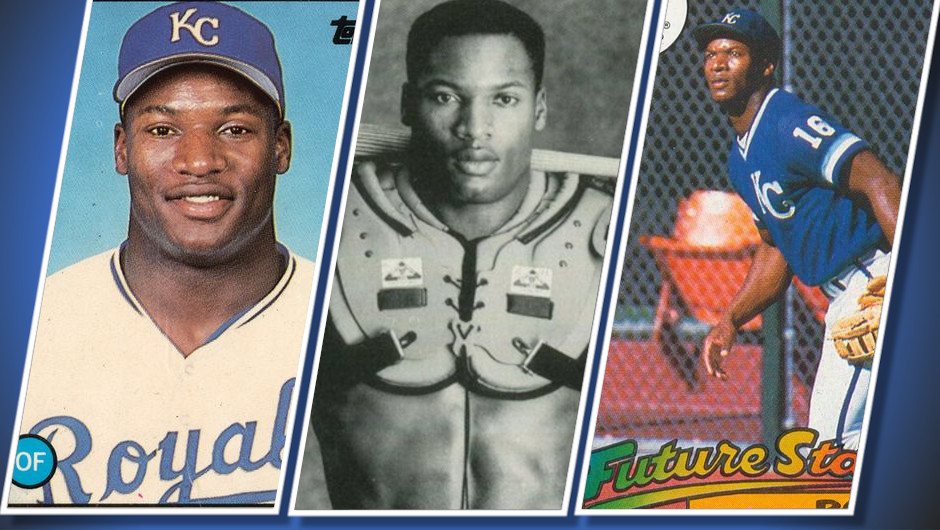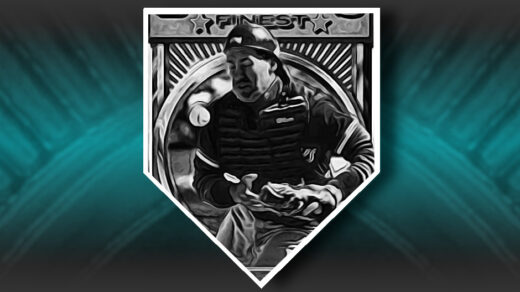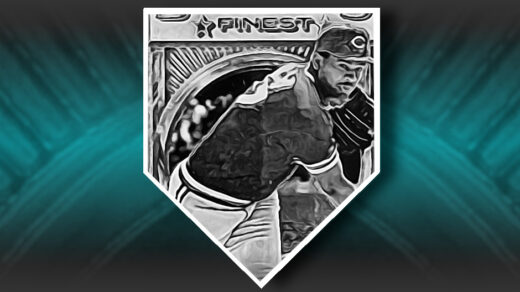After the odd results of sacrificing a Topps Finest Ken Griffey, Jr. card to my Wallet Card Project I decided to step back a bit to a time when cards were a bit more fragile. This year I am focusing on cards of Bo Jackson. The choice of Jackson should not need much of an explanation. However, seeing as how he will turn old enough to collect the earliest stages of Social Security this year, it is possible that more time has elapsed than I thought. Maybe our memories aren’t a sharp as the used to be.
It seems hard to imagine a time when there was a professional athlete more popular than Michael Jordan. Jordan, who would not win his first title until 1991, defined the 1990s sports landscape but had serious competition in the late 1980s. Bo interrupted Jordan’s dominance of nightly highlight reels. He was everywhere, including the face of Nike. Air Jordans were popular shoes, but it was Bo’s Nike Cross Trainers that were the subject of constant commercial bombardment for several years. Jordan himself is seen in Nike ads saying “Bo knows” as the multisport star takes on basketball, hockey, and swimming. Jordan appeared in Space Jam while Bo had Pro Stars, his own animated series on NBC. Bo guest starred in a “Bo knows” themed episode of Sesame Street and is mentioned in the lyrics of Ini Kamoze’s Here Comes the Hot Stepper. Bo was even represented by an invincible player in the Nintendo game Super Techmo Bowl.
Jackson sports cards were always fun to have around. They begged for collectors to swap tales of his exploits, regardless of veracity. What made these fun was many of the tall tales were actually true, and those that were not still seemed uniquely possible for Bo. I saw him on TV run up a vertical wall to make a catch in a baseball game. Did he just break a bat over his leg? His head? Both? Did he run so fast in an indoor football tryout that the fire doors needed to be held open so he could avoid the wall? Yes. Did he really jump a 40-foot ravine? Eh…sorta.
Bo Jackson cards are simply fun. I’m going to enjoy carrying them with me in 2024, and here are the ones selected for this purpose.
1986 Topps Traded
The card that started it all. While this card was referred to as Jackson’s “XRC” for quite a while, it stands today as the default card collectors are referring to when they talk about having a Bo Jackson rookie card. This is one of the key cards in the amazingly well stocked 1986 Topps Traded set. The photo is particularly interesting, as it is the same one the Royals handed out as part of their press kits to the media. Jackson was such a late addition to the effort that the only card manufacturers to feature him in late season products both used this “he might make the team so you never know” press photo from Spring Training.
Whether Jackson would really stick to baseball was a question mark at the time. He had been seen as a football player first, though his skills best translated to track and field. A seemingly calculated move by the Tampa Bay Buccaneers to get his amateur status revoked in his senior year at Auburn backfired when the team picked Jackson first overall in the NFL Draft. The #1 pick then proceeded to refuse to talk to the team in revenge for their actions. Bo said he would rather play baseball, prompting the Kansas City Royals to reach out and see if he would really sign an MLB contract if selected in the draft. He did, and promptly announced his MLB bona fides by hitting a home run in his first at-bat.
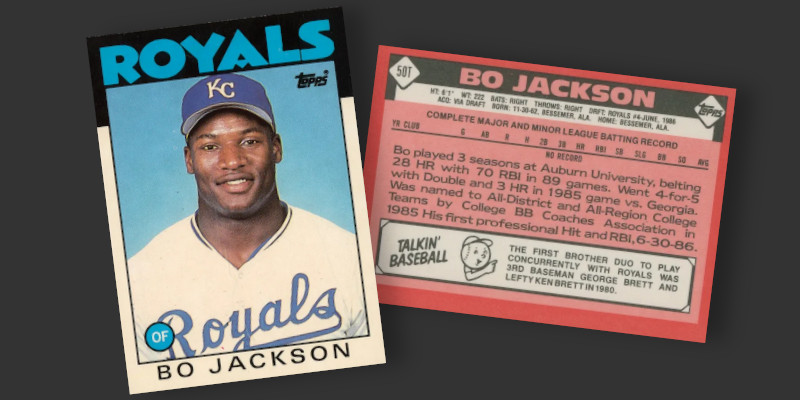
1987 Topps Future Stars
This card was my first every ’87 Topps card and represents the first time I ever outright purchased a card outside of a wax pack. I was nine years old and had yet to set foot inside a card show. I did, however, eagerly rifle through the card collecting magazines that were stashed near the registers at our local grocery store. I begged my mom to pay two or three dollars for Sports Card Trader, a multisport price guide that also included a fair amount of advertising from various card dealers. One of those ads had long lists of rookie cards for sale, and I spotted Bo Jackson’s name as one of the players whose card could be purchased.
Realizing that I could have a real, genuine rookie card of Bo Jackson for the price of 10 packs of 1991 Donruss I began reading the fine print at the bottom of the ad. I didn’t know how to obtain things from catalogs and began to learn how. The first issue to sort out was how to inform the dealer that I wanted the card and to please not sell it before I could get it. I wrote a letter, being careful to proudly tell whatever hobby shop stood behind the ad that I was 9 years old and including every detail I could muster from the rather brief advertisement. This was Bo Jackson, the card was #170, it was made by Topps, cost $5, and would be Near Mint or better.
Satisfied that the letter clearly conveyed my needs, I set about figuring out how to pay for it. I counted out the requested $5 in coins from the cake frosting can I used as a piggy bank, and tried to figure out how to fit them all in the envelope I had set aside to mail my letter. My dad was an accountant, so I figured he was a good place to go with money questions. I showed him what I had done and asked what else I should do. He explained the seller did not want my coins but a check instead. He also explained that I needed another $3.25 to buy the card, and with this information I was introduced to the idea of shipping and handling charges. He kicked in the extra funds, wrote a check for $8.25, and sent the letter on its way.
Then I waited. And waited. And forgot about the card. I remembered it again and checked the terms of sale. Orders would take 5-8 weeks to be processed! Almost three months later I received the card in the mail and all was well. It even came with a top loader, an appreciated bonus as those suckers cost $3 for a pack of 25. Aside from the pride of having (mostly) paid for the card myself and mailing a real letter to an adult, the card was special for the way it looked. The colors on the front were incredibly vivid.
Apparently I wasn’t alone in admiring the card. Results of a reader survey appeared near the end of the May 1991 issue of Beckett Baseball Card Monthly in which respondents had been asked to name the best card of the 1980s. The 1987 Topps Bo Jackson card placed a solid second place in the rankings, finishing just behind the 1980 Topps Rickey Henderson rookie and ahead of the 1989 Upper Deck triple exposure card of Jim Abbott.
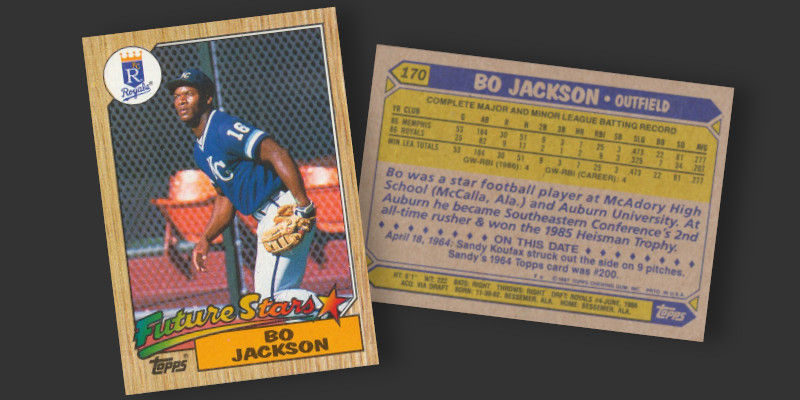
Fun fact: The Sporting News’ Ryan Fagan is an avid card collector and has used the ’87 Topps Bo Jackson as a wallet card.
1990 Score
As hard as it is to believe, there was a time in late 1990 and into the next year where 1990 Score was one of the hottest baseball sets around. It was more than 700 cards in size, featured multiple subsets, had a handful of error cards to chase, and featured all the biggest rookies. The novelty of well written biographical text was still there, something that Score used to differentiate its products from competitors since their introduction in 1988. The cards were brightly colored, with vivid photography and some of the brightest rainbow-hued borders in the hobby. Whole sets even arrived in bright yellow boxes, not the more mundane corrugated affairs from Donruss and Fleer.
One card, however, stood out from the rest by its contrasts. The photograph was in black and white. The borders were stark white. The biographical text consisted solely of two letters, only one of which had any color. It was Bo Jackson, appearing for the third time in the set and using one of sport’s most iconic images.
The card peaked in popularity right as 1991 and my collecting career began. Two weeks into the new year Jackson was brought down in a football game by a normal looking tackle. He took some time to get on his feet and left the game. It would be some time later when we all realized his hip had been destroyed and that one of the most exciting NFL careers was over.
Jackson eventually returned to play a few seasons of baseball, but the magic of two sports was gone. We still had Deion Sanders to watch, but it was different. Crowds watching Bo play all seemed to be rooting on the same side, while Sanders generated nearly evenly matched arguments over whether or not he would live up the hype he carried with him (he eventually did). Jackson was an athlete that brought people together, something that makes for a truly special player.
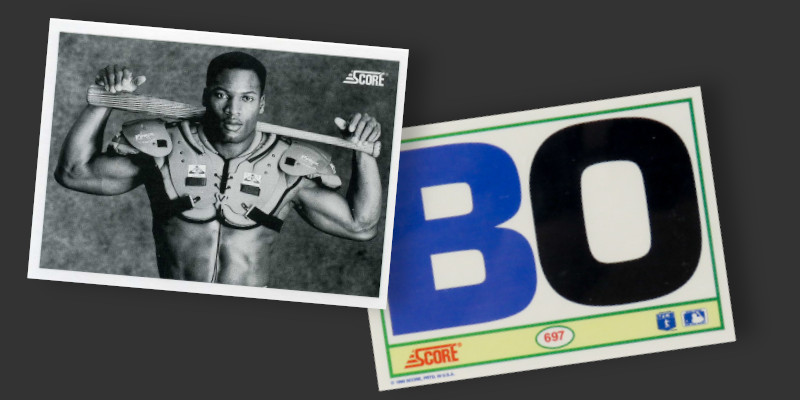
No other baseball card in the ’90s has had the same effect on collectors as the black-and-white baseball/football card (#697) released by Score in its 1990 baseball set.
November 1991 Beckett Baseball Card Monthly, Page 21

